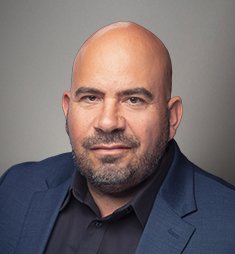- calendar_month September 8, 2023
- folder Commercial Real Estate
What Are Common Area Maintenance Charges?
In this article, we will offer a more detailed explanation of what common area maintenance (commonly referred to as CAM) fees are, what they include, who is responsible for paying them and options for tenants to negotiate these charges in their business's favor.
What Are Common Area Maintenance Fees?
Common area maintenance fees cover operating expenses for shared areas of the building you are leasing. These are paid by the tenant to the landlord so that the owner can recoup the costs associated with operating and maintaining the communal areas within a commercial building or campus.
These fees cover costs for things like landscaping, parking lot maintenance, and janitorial services for lobbies and bathrooms. They do not usually include tenant-specific costs such as supplemental HVAC for a server room.
Are CAM Fees Included in My Rent?
It is important to understand these expenses and how they’re structured before signing a new lease.
In a triple net lease, the most common type of commercial lease and the instance where a tenant will need to be aware of CAM charges, tenants are responsible for paying their calculated share of these charges on top of the base rent cost.
In the case of a single or double net lease, the landlord covers the cost of CAM charges. In a full service gross lease, CAM fees are included in the one lump sum rental payment the tenant makes per month to the landlord. You can learn more detail about each type of lease structure here.
What's Included in CAM Expenses?
What's included in a tenant’s CAM fees can vary from building to building and landlord to landlord, so it is important for tenants to carefully read their leases and understand what their CAM entails. Industrial and retail tenants will also see a very different list of CAM items due to the nature of their businesses and the buildings they typically occupy.
For office tenants, it is ordinary to see the following items included in CAM expenses:
- Lighting
- Water for irrigation, drinking, and restrooms
- Landscaping
- Parking lot maintenance
- Administrative fees
- Sidewalks
- Driveways
- Stormwater management
- Electric
- Janitorial services
- Management salaries and fees
- Sewage
- Window washing
- Stairwell maintenance
For industrial properties, the following items are typically included in CAM expenses:
- Common area lighting
- Water for irrigation
- Landscaping
- Parking lot maintenance
- Administrative fees
For retail properties, the following items are often included in CAM expenses:
- Common area lighting
- Water for irrigation
- Landscaping
- Parking lot maintenance
- Administrative fees
- Sidewalks
- Driveways
- Stormwater
- Utility facilities
- Loading docks
- Delivery areas
Administrative fees are a negotiated percentage of all costs of operating and maintaining a property.
How Are CAM Expenses Calculated?
At the beginning of the year, the property manager will estimate the expected CAM expense as part of the building's annual budget. Each tenant will then be billed monthly for this as a part of their operating expenses.
The portion of the overall CAM expense that tenants are responsible for paying is determined by the percentage of square footage they occupy in the gross leasable area of the building.
This estimation is reconciled at the end of the year, and the tenant will either be billed for their portion of any overages or credited any excess paid.
Good property managers should be able to see any potential overages mid-year and will adjust the estimated CAM expenses for the rest of the year. This would raise a tenant’s monthly operating expenses, but will prevent the pain of writing an unforeseen, large check for a lump sum at the end of the year.
Can CAM Expenses Be Negotiated?
Since CAM expenses are a reimbursement of costs incurred by the landlord throughout the year, they usually aren’t negotiated.
CAM expenses often include many indirect costs that are not easily identifiable, so it is important to ask the landlord to narrowly define the exact expenses included in your lease. Some expenses, such as security costs, utilities and snow removal expenses for instance, are considered “uncontrollable.”
A tenant rep broker may be able to help tenants negotiate lease terms to limit the percentage that CAM expenses can increase. These CAM expense caps should be negotiated into initial lease terms. The landlord may try to negotiate a floor for annual CAM expense increases.
CHRIS PERRY
